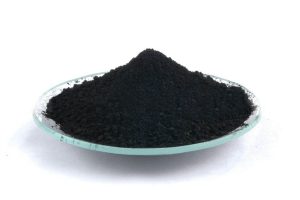
What are the raw materials for producing carbon black? Is it sustainable?
2024-03-14
About carbon black
Carbon black is an amorphous carbon with high surface area and strong absorptive properties. It is widely used in industries such as tires, plastics, inks, paints and electronics. Carbon black is a key ingredient in improving product performance and durability, adding strength, conductivity and UV resistance.
Raw materials for carbon black production
Petroleum-based raw materials
Traditionally, carbon black has been produced from petroleum-based feedstocks. These include:
Heavy Oil:A viscous hydrocarbon used as the primary raw material for carbon black production.
Coal tar: A by-product of coal coking, it contains a variety of hydrocarbons and is used as a raw material for special carbon black.
Natural gas:Through the thermal cracking process, natural gas can be converted into various hydrocarbons, some of which can be used as carbon black raw materials.
Renewable raw materials
Recent developments explore sustainable alternatives to petroleum feedstocks. These renewable resources include:
Biomass:Plant materials such as crop residues, wood waste and animal fats can be thermochemically converted into hydrocarbons for use as carbon black feedstock.
Waste plastics:Recycling waste plastics through pyrolysis or gasification can produce hydrocarbons suitable for the production of carbon black.
Waste tires:Waste tires are an important source of waste, which contain hydrocarbons that can be recovered through pyrolysis and used as carbon black raw materials.
The impact of carbon black production on the environment
Oil production
Petroleum-based carbon black production is energy intensive and releases greenhouse gases, primarily carbon dioxide (CO<sub>2</sub>). The American Chemistry Council estimates that for every ton of carbon black produced, approximately 2.5 tons of CO<sub>2</sub> are emitted.
Renewable raw materials
Using renewable raw materials to produce carbon black offers significant environmental benefits. Biomass-derived carbon black has a lower carbon footprint because plants absorb CO<sub>2</sub> during growth. Recycling waste plastics and scrap tires into carbon black feedstock can reduce landfill waste and increase resource efficiency.
Sustainable development initiatives
Energy Saving Process
Advances in production processes have improved energy efficiency. The use of modern furnaces and optimized process parameters significantly reduces the energy consumption and greenhouse gas emissions associated with carbon black production.
Product life cycle analysis
Conducting a life cycle assessment is critical to assessing the overall sustainability of carbon black. Analyzing the environmental impact from raw material extraction to end-of-life treatment can provide a comprehensive view of its footprint and identify areas for improvement.
Economic considerations
Petroleum-based raw materials and renewable raw materials
Raw material cost is an important factor in carbon black production. Petroleum feedstocks are generally cheaper than renewable alternatives. However, the environmental benefits associated with oil production and potential carbon taxes may spur a transition to renewable energy.
Market demand
The global carbon black market is expected to grow steadily over the next few years, driven by rising demand from industries such as automotive, construction, and electronics. This growth in demand is driving investment in sustainable carbon black production technologies.
Carbon black, an essential industrial material, is primarily produced from petroleum-based raw materials. However, the environmental impact of petroleum-based production has prompted the exploration of renewable feedstocks. Biomass, waste plastics, and used tires offer sustainable alternatives that reduce greenhouse gas emissions and promote resource efficiency. As the global demand for carbon black continues to grow, the transition to sustainable production methods is essential for ensuring the long-term viability and environmental responsibility of this versatile material.

